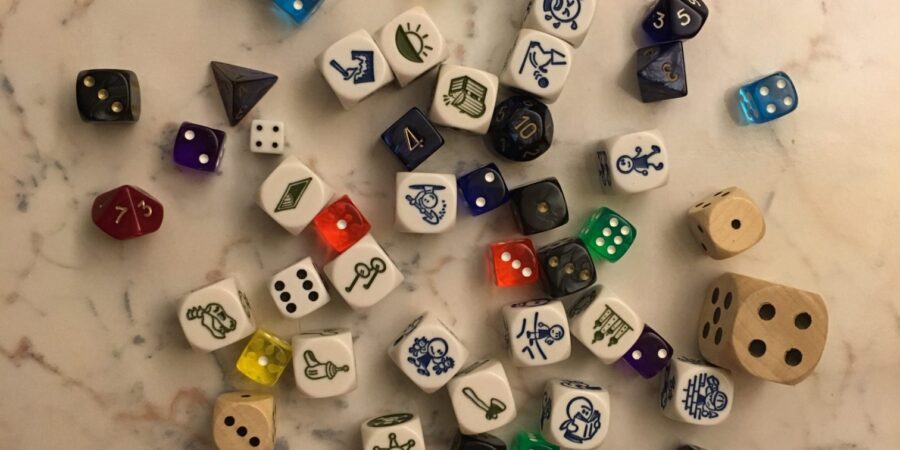Who hasn’t enjoyed a game or two of yahtzee, backgammon or other game involving dice? Their size and multiple combinations make them easy to use in order to produce a random outcome. They are used either in pure chance games or as a way to determine the movement of pieces in board games.
They date back to Ancient Greece and Rome and they continue to evolve to this day. They are fascinating little objects which can be used even in class…
Activities
- Read this article on How Centuries-Old Dice Reveal Changing Attitudes About Fate and answer the following questions :
- What is the “sevens configuration”, mentioned in the third paragraph?
- What could be the reasons behind the Romans’ using irregular dice?
- What changed in dice in 1100 AD?
- When did dice shift back to the “seven” system?
- How can the evolving shaping of dice help archaeologists and historians?
- Watch this video on Who invented 20 sided dice and discuss the following questions in pairs (take notes as you listen):
- What’s the name of the popular game the speaker mentions in the video? Have you ever played it?
- What period of time is the dice in the Metropolitan Museum of Art dated back to?
- What was it made of?
- When did the name of the icosahedron spring to humanity’s awareness?
- What makes “Platonic solids” special?
- As a follow-up activity, each pair of students is given a set of Rory’s Story Cubes which I have found are always a hit among students. Each student is asked to “roll the dice” and take notes of what they showed in their notebook. Then, they have to write a story using the pictures they ended up with. In the next lesson, it’s always fun to listen to different stories on the same pictures! Enjoy!
